Deal, New Jersey, United States
Architects: Isaac Mackie (1913), Walter Travis (1916), Dick Wilson (1956), Rees Jones (1998), Renaissance Golf (2014)
7,040 Yards, Par-71
Rating/Slope: 75.0/139
My Quick Review: Belonging in the 'Hidden Gem' category, Hollywood Golf Club is a great Travis design overshadowed by the bigger names in the MET.
In advance of hosting it's second National Championship this fall, Hollywood Golf Club hired Renaissance Golf Design to complete a bunker restoration. While the course is credited to Walter Travis, several architects have had their hand in shaping the golf course as it sits today. The routing belongs to Isaac Mackie who laid out the course prior to Travis' involvement. Travis is responsible for the green contouring and bunker scheme, as well as the creation of the devilish par-4 13th, which came to being when he combined two shorter holes and found a spot for a new 17th hole. Further renovations were completed by Dick Wilson in the 1950s and Rees Jones in 1998, which included the alteration of Travis' 17th green, the only green that is not a Travis original.
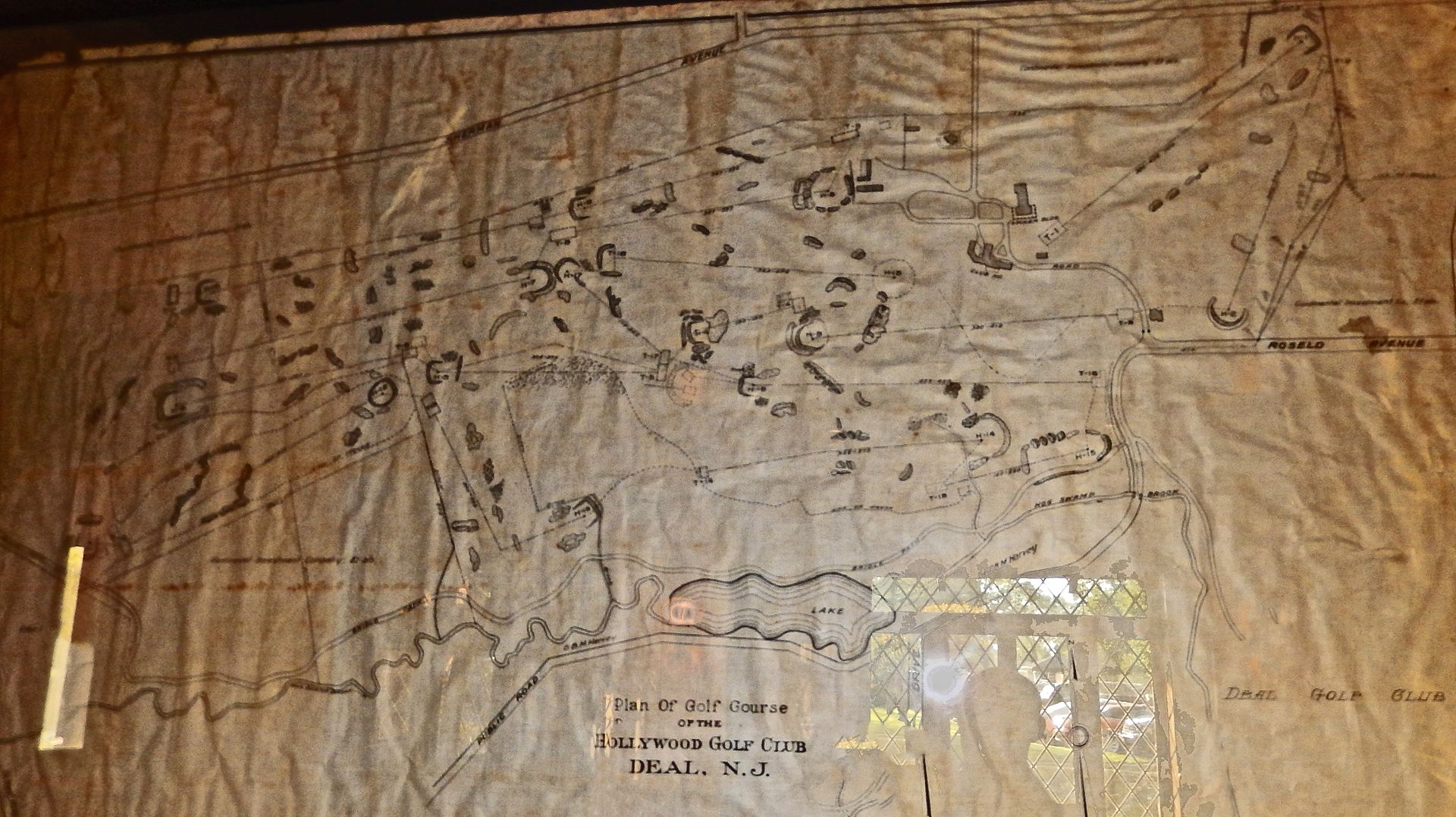
The opener at Hollywood Golf Club is a stout down and up par-4. An un-needed fairway bunker down the left side has been sensibly removed to create a wide first fairway thus allowing those golfers that drive down the left to take on the challenge of reaching the green -- in so doing they must avoid the cavernous left bunker, which is set back from the green. Surely there are more double bogeys made now that the golfer can foolishly play for the green from a poor position.
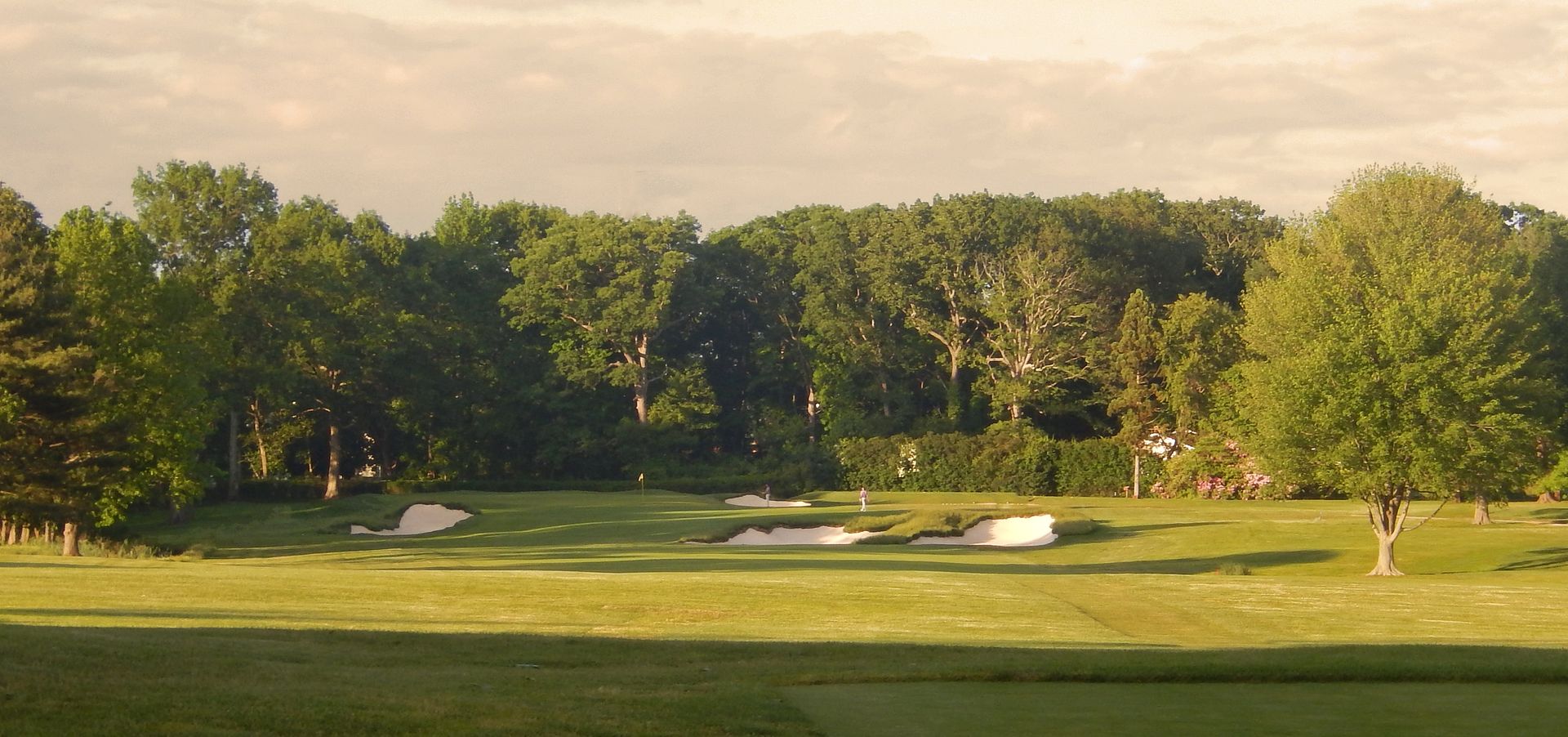
A brief reprieve in an otherwise difficult opening stretch of holes, the second is a short par-4 of 351 yards. A foozle bunker has been restored on the left and the fairway bunker on the right pushed 30 yards down the fairway to return it to relevance. The hole's primary defence is at the green where a false-front and small back tier demand precision.
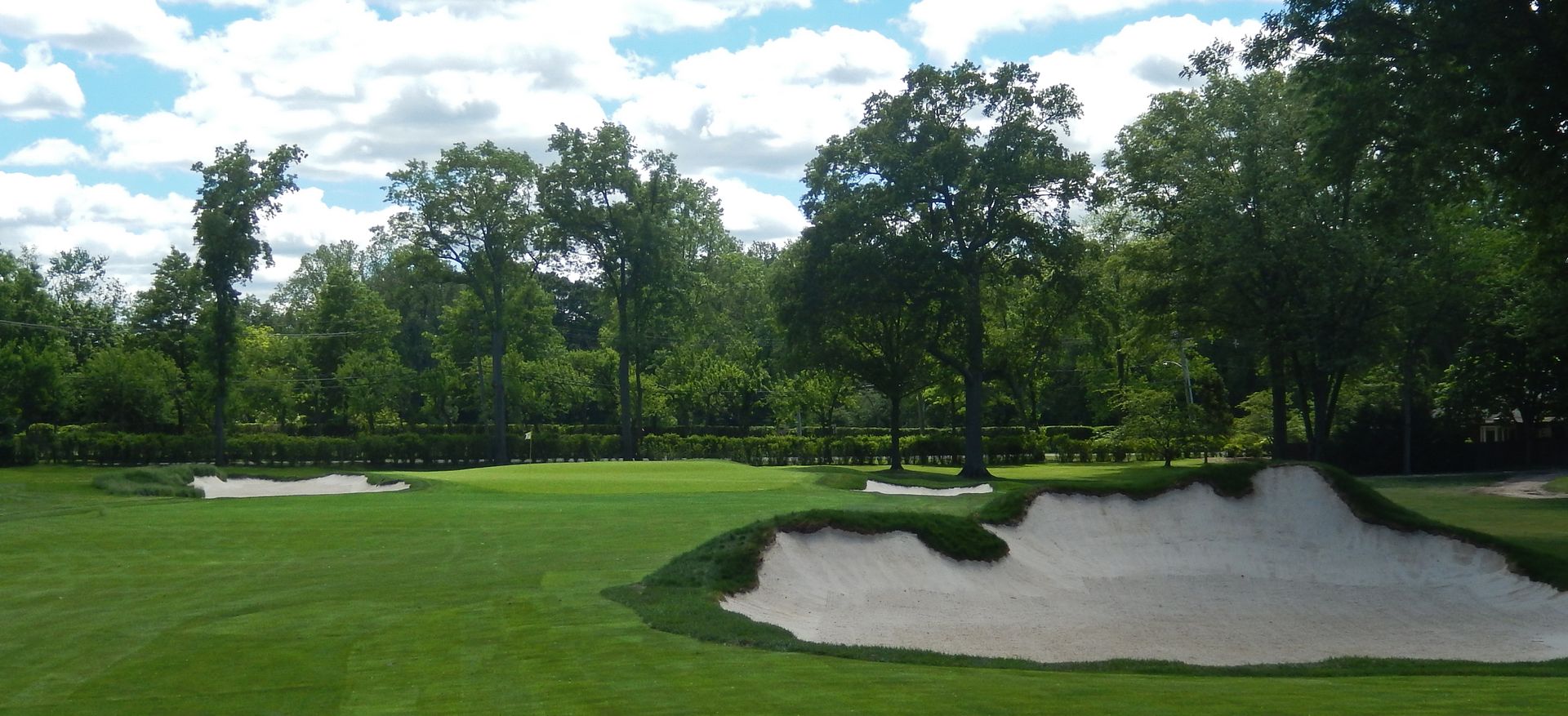
The 3rd, a par-4 of 460 yards, once demanded a blind tee shot over a rise, but in the name of safety and fairness Rees Jones built-up the tee box to give the golfer a glimpse of the fairway and green beyond. The drive is to a rare bunkerless fairway that will leave a long approach from a downhill lie. The steeply back-to-front sloped green will help to stop a ball on the putting surface and, a rarity for Travis, bunkers sit beyond the green's midpoint.

Forgive me for using the term, but the 4th at Hollywood is undoubtedly the club's signature hole. The uphill 160 yard par-3 is like nothing else in the world of golf with dramatic mounding and volcano bunkering flanking the entrance to the green and creating a mostly blind putting surface. A bunker fronting the centre of the green has been restored.

As seen from the left, the small green tilts from back-to-front. Given the slope of the green and sharp false-front, precise distance control is placed at a premium.

While the tee shot at the 400 yard 5th, a dogleg with bunkers guarding the outside of the bend and trees protecting the short line, is not my favourite, yet another unique approach and green make the hole. What to make of the berm crossing the fairway? Is it the top line of a bunker? Or just a mound? How far short of the green does it sit, how much room lay beyond and what is the nature of the land beyond? Much like the approach to the 10th at The Golf Club, the visual trick is created by nothing more than a small rough step in the fairway.
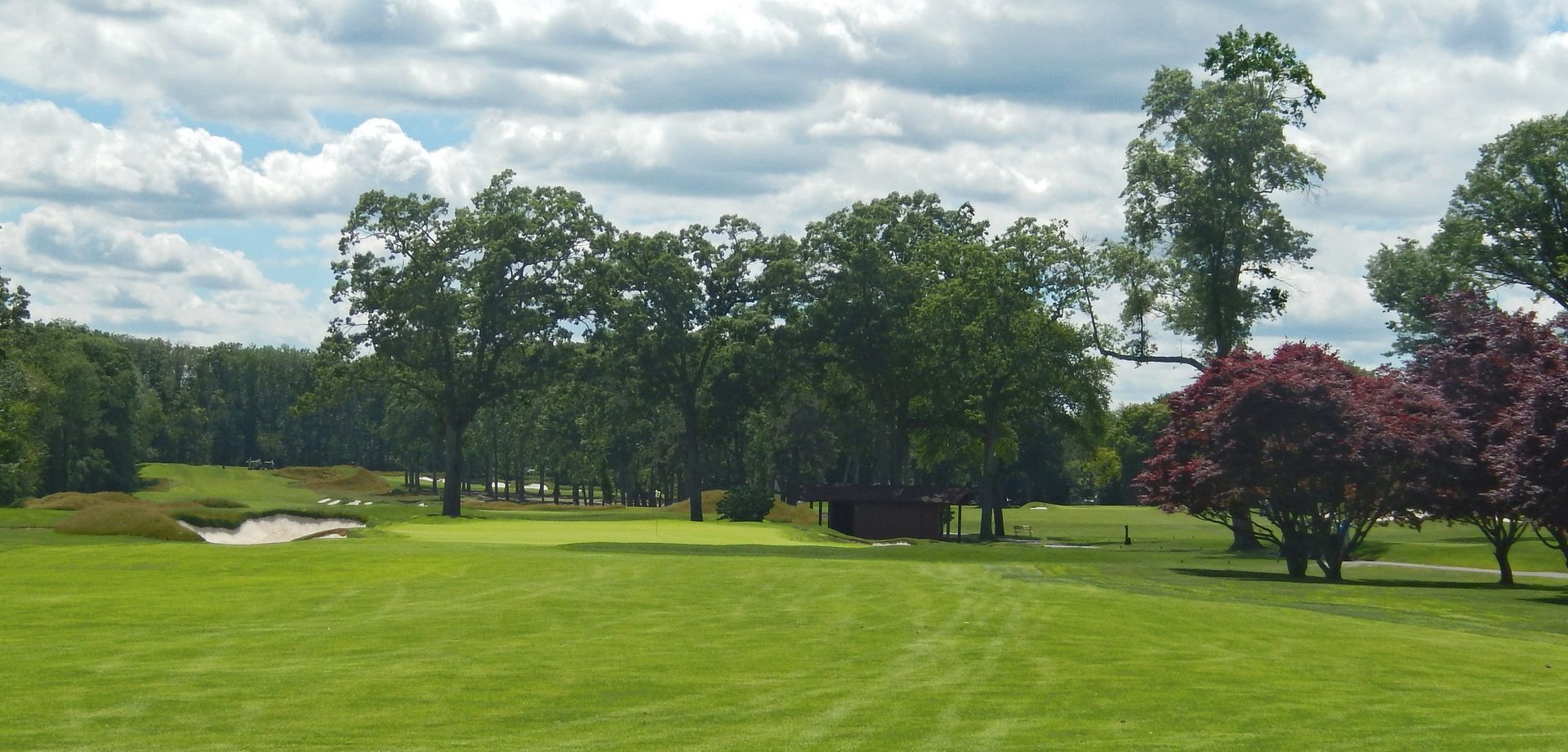
The 6th is another strong par-4, playing over 420 yards and with deep bunkering lining the right side of the fairway. Yet again, though, the hole goes from merely good to really great at the green. An open green front allows a running approach, though a false front makes it more difficult, and a pair of ridges falling seamlessly from the mounding bordering the putting surface make the green among the wildest at Hollywood.

While it is the 4th that is the most unique hole at Hollywood, it is the 7th that often receives the designation as the 'best' hole on the course, and rightly so. Bunkers sit staggered at the edge of the fairway, right, left, right, left, and ensure that the golfer must give consideration on each shot on the hole.

But it is the angled green, when combined with the last two bunkers, right then left, that makes the hole. The right fairway bunker sits some 90 yards from the putting surface and must be challenged for a reasonable angle into the three-tiered green. Adding effect to the angle of the green is the tilt, falling hard from the back-left, which emphasizes the importance of approaching from the right. Even with a wedge in the golfer's hand, a pitch from the left, over the deep fronting bunker, carries the risk of taking the slope of the green and running to its front edge. Play a pitch from the right and the shot is a simple one.

At the par-4 9th the golfer must deal with a rare carry hazard running across the fairway some 150 yards from the member's tee. Though it shouldn't be in play, the mounding has the effect of hiding the landing zone.

Perhaps the most fascinating green on the course, and reminiscent of the 9th green at Winged Foot East, the front of the 10th green falls from back-to-front before it falls away into a rear trough.

The 10th continues along the property line and is an excellent par-5 start to the back nine. At just over 500 yards, many golfers will stand on the tee hoping to reach the green in two shots, though fairway bunkering in play both left and right from the tee is truly penal and I tee shot into the bunker will make hoping the green in three shots a challenge. Most golfers will have little trouble clearing cross bunkering on their second shot, but it does hide the landing zone.

An awe-inspiring bunker protects the right side of the 11th green and golfers will do anything they can to avoid it. Playing a tee shot near the fairway bunker on the left makes that challenge far easier, though the strategy of the hole is hurt by an overhanging tree limb or three.

Nicknamed 'Heinz 57,' the 12th at Hollywood is a 460 yard par-4 that once featured 57(!) bunkers. I can't say for certain the exact number, but the recent bunker restoration has brought the hole much closer to its original appearance. Longer hitters are forced to play a tee shot down the narrow portion of fairway down the right, though most non-tiger golfers will have the room to play a driver toward the cross-bunkering some 280 yards from the tee.

While the restored width in the right fairway has once again made it a viable option, it would seem to be the poorer choice. Over the cross-bunkering the golfer is given some 50 yards of fairway and open green front to run an approach onto the putting surface, though a fall-off protects the front-right portion of the green and should impact play all the way back to the tee. Any approach from the right must negotiate this drop-off.
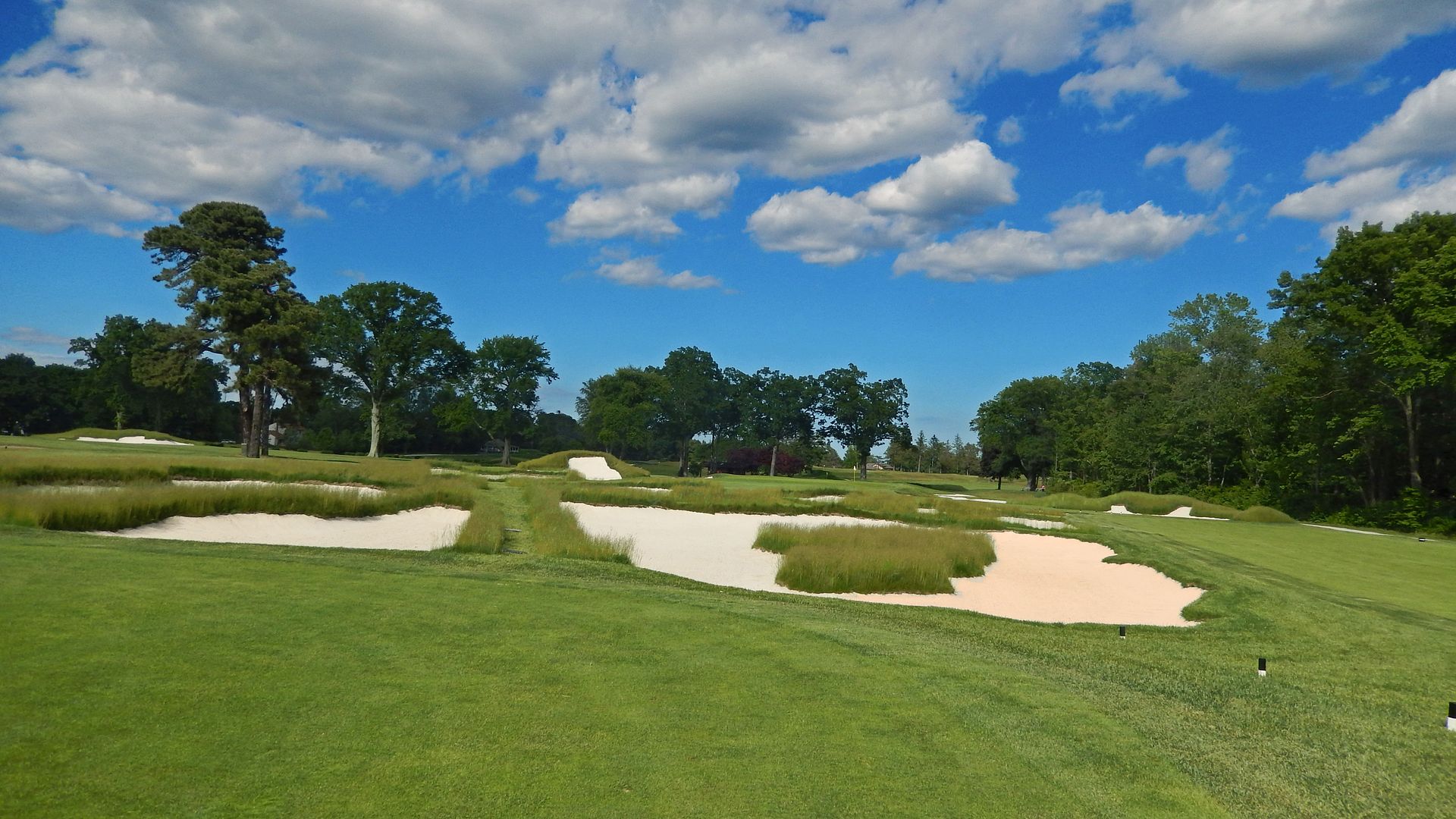

While the restored width in the right fairway has once again made it a viable option, it would seem to be the poorer choice. Over the cross-bunkering the golfer is given some 50 yards of fairway and open green front to run an approach onto the putting surface, though a fall-off protects the front-right portion of the green and should impact play all the way back to the tee. Any approach from the right must negotiate this drop-off.


No comments:
Post a Comment